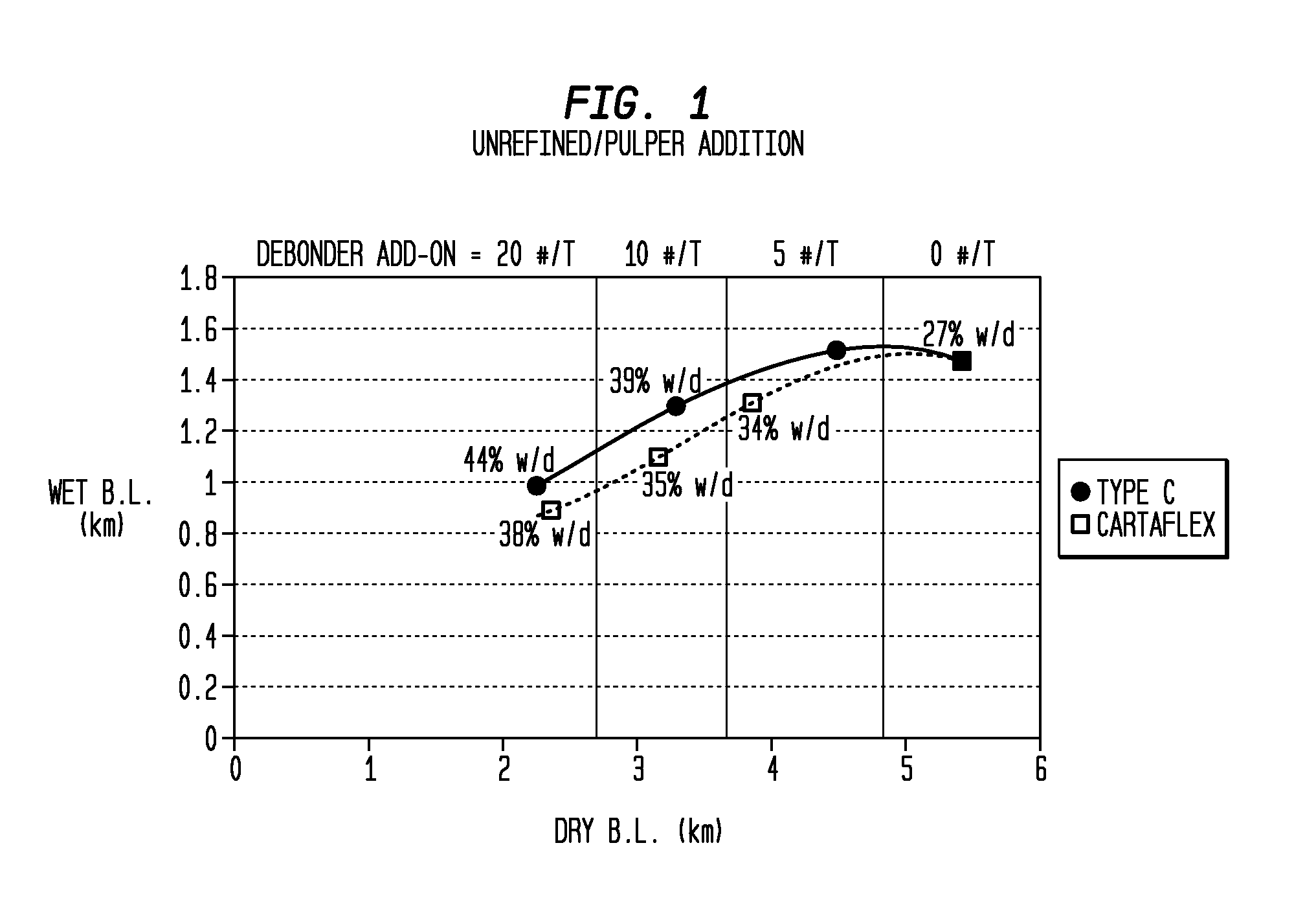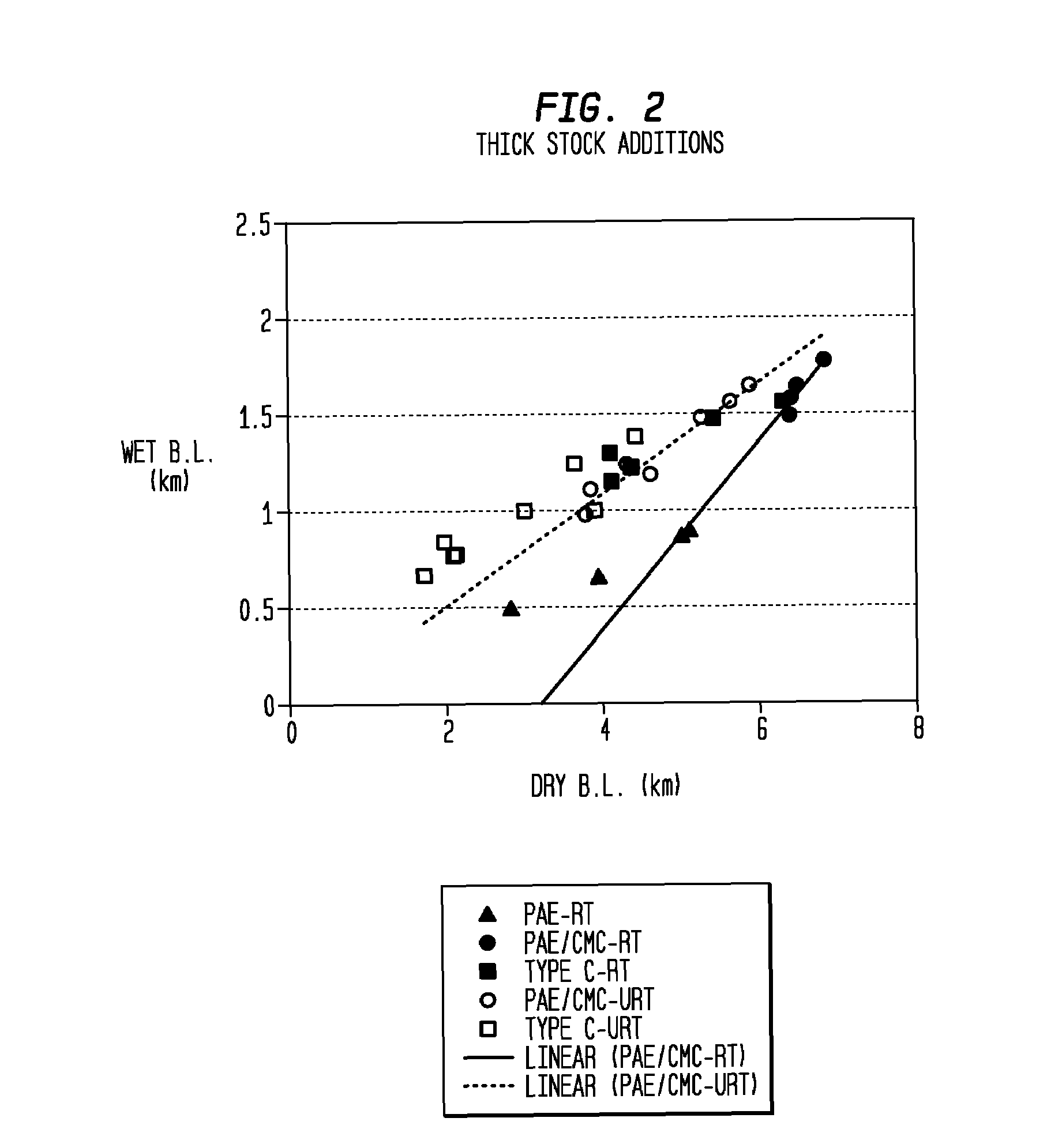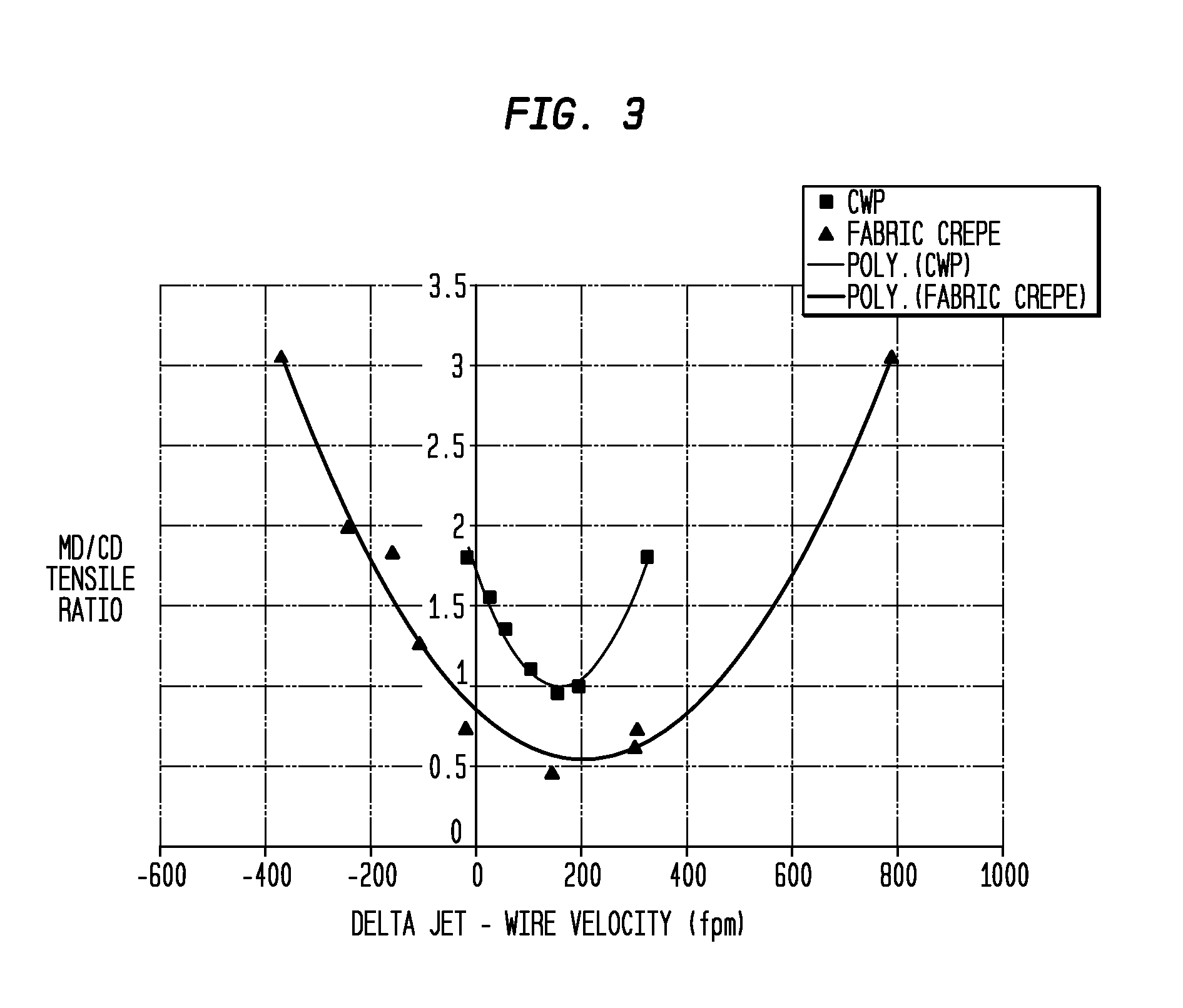Method of producing absorbent sheet with increased wet/dry CD tensile ratio
a technology of absorbent sheets and cd, which is applied in the field of absorbent sheets, can solve the problems of affecting the quality of absorbent sheets, and affecting the quality of absorbent sheets, and achieves the effects of increasing the wet/dry cd tensile ratio, high consistency, and high level
- Summary
- Abstract
- Description
- Claims
- Application Information
AI Technical Summary
Benefits of technology
Problems solved by technology
Method used
Image
Examples
examples 1-7
Handsheet Preparation
[0083]British handsheets were prepared to a target basis weight of around 60 g / m2 by treating either a 1:1 unrefined SSWK:SHWK furnish or a 1:1 refined (590 CSF) SSWK:unrefined SHWK furnish sequentially with a debonder, AMRES HP25 (PAE), and carboxymethyl-cellulose (CMC), pressing at 15 psi / 5 min, drying on a heated drum dryer, and curing in a forced air oven at 105° C. / 5 min. For all preparations designated “pulper treatments” the debonder was added to the furnish and disintegrated in a British disintegrator for 30 min @ 3 percent consistency, then treated with the PAE followed by CMC between 5 min intervals. The same procedure was used for treatments designated thick stock treatments except the debonder is added to the thick stock after the latter had been disintegrated for 30 min. After adding the debonder the furnish was stirred for 15 min prior to addition of PAE and CMC.
[0084]The debonders employed were Cartaflex® TNS available from Clariant and an imidazo...
PUM
| Property | Measurement | Unit |
|---|---|---|
| wet breaking length | aaaaa | aaaaa |
| wet breaking length | aaaaa | aaaaa |
| wet breaking length | aaaaa | aaaaa |
Abstract
Description
Claims
Application Information
 Login to View More
Login to View More - R&D
- Intellectual Property
- Life Sciences
- Materials
- Tech Scout
- Unparalleled Data Quality
- Higher Quality Content
- 60% Fewer Hallucinations
Browse by: Latest US Patents, China's latest patents, Technical Efficacy Thesaurus, Application Domain, Technology Topic, Popular Technical Reports.
© 2025 PatSnap. All rights reserved.Legal|Privacy policy|Modern Slavery Act Transparency Statement|Sitemap|About US| Contact US: help@patsnap.com



